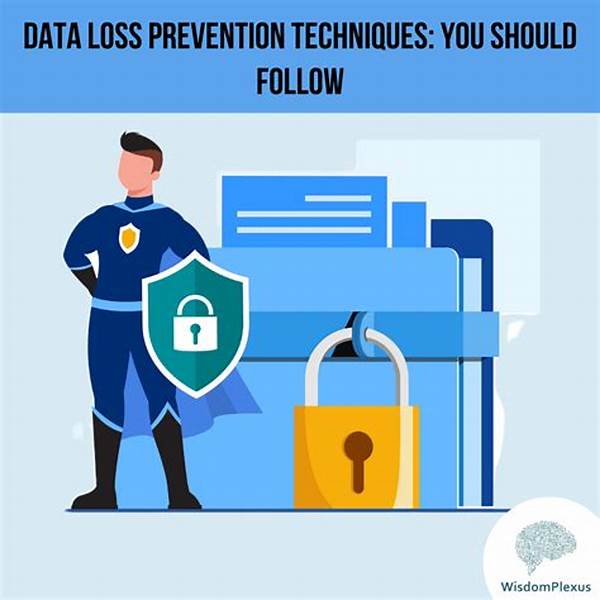Data Loss Prevention Techniques
In the digital age, information is often considered the most valuable asset for individuals and businesses alike. Imagine losing all your critical data—customer records, financial documents, or personal files, in the blink of an eye. The consequences could be disastrous, leaving you in a whirlwind of chaos. Data loss has become a nightmare that lurks around every corner of our tech-driven lives. Thankfully, data loss prevention techniques have come to the rescue to ensure your precious data doesn’t disappear into the digital ether.
In today’s competitive marketplace, the protection of data is not just a necessity—it’s an exclusive service, a premium offering that can set you apart from others. Picture this: your business is booming, customers are happy, and the revenue graph is soaring. Now add a dedicated layer of data protection. Suddenly, your business proposition is not just about delivering products or services; it’s about trust, reliability, and security. What better Unique Selling Point could there be than ensuring your clients that their data is always safe in your hands?
Why Data Loss Prevention Matters
As we continue to rely more heavily on data, the importance of data loss prevention techniques cannot be overstated. Have you ever heard the saying, “Better safe than sorry?” In terms of data, this idiom translates into taking proactive steps to prevent data loss before it’s too late. Statistics show that a significant percentage of businesses that suffer major data losses without proper prevention measures often face insurmountable recovery costs and, in some cases, even go out of business. Clearly, nobody wants to be another statistic in the world of mismanaged data.
—
Delving Deeper into Data Loss Prevention Techniques
Introduction of effective data loss prevention techniques can range from simple steps to complex systems, depending on the needs of the entity in question. For businesses handling massive amounts of data, sophisticated software programs and encryption methods can offer robust protection. For individuals, something as straightforward as regular data backups and cautious web browsing can stave off potential data catastrophes.
Advanced Techniques in Data Prevention
Sophisticated organizations often employ elaborate data loss prevention techniques, including artificial intelligence-driven anomaly detection systems. These systems can detect unusual data access patterns, alerting administrators to potentially malicious activities. The constant evolution of cyber threats necessitates continuously adaptive techniques to remain one step ahead of those aiming to exploit vulnerabilities.
Practical Applications
On a more practical level, cloud storage solutions offer a reliable option for data backup. Services like Google Drive, Dropbox, and Amazon AWS not only store data securely but also replicate it across various data centers, ensuring redundancy and minimizing the risk of total data loss. These solutions, while appearing simple, form the bedrock of effective data loss prevention techniques for many users worldwide.
—
Key Topics on Data Loss Prevention Techniques
—
Discussion: The Future of Data Loss Prevention
In a world where digital information is ubiquitous, the relevance of data loss prevention techniques remains ever vital. As cyber threats grow in sophistication, so too must our strategies to combat them. The ongoing evolution of technology promises exciting developments in data protection, from quantum cryptography to blockchain. Yet, even as we anticipate these advancements, the foundational principles of data loss prevention remain unchanged—protect what you value.
Every organization, big or small, must tailor its data protection strategies to its specific needs and risks. This is not merely a technical requirement but a business imperative. With regulatory landscapes also shifting, organizations are increasingly required to adhere to stringent data protection laws. Failure to comply can result in substantial penalties, reinforcing the necessity of robust data loss prevention techniques.
Ultimately, the discussion of data loss prevention techniques is an ongoing dialogue between technology, business, and regulatory bodies. Collaboration across these domains will help us to construct a secure digital future, safeguarding the vital information that fuels our modern lives.
—
Exploring Data Loss Prevention Techniques in Depth
Data loss prevention techniques stand as a critical pillar in the framework of information security. These techniques encompass a broad range of strategies designed to safeguard data from being lost, corrupted, or accessed by unauthorized individuals. The method you choose will depend on the sensitivity of the data and the specific threats posed to it. However, the core goal in all cases is to ensure data integrity and availability.
Advanced encryption plays a significant role in data loss prevention, masking the data so that even if intercepted, it remains undecipherable without the correct key. Many organizations have turned to end-to-end encryption to protect data in transit, while at the same time utilizing encryption solutions for data at rest. Combined, these provide a comprehensive security envelope that keeps sensitive information under lock and key.
Strategies and Policies
Policies and procedures also form an integral part of data loss prevention techniques. Organizations are recognizing the importance of cultivating a security-first culture among their workforce to prevent accidental data breaches. Comprehensive training programs educate employees on best practices, potential threats, and effective responses to data security incidents. Such initiatives serve as the first line of defense in mitigating human error, a frequent culprit in data loss scenarios.
Cloud and AI Integrations
The integration of artificial intelligence into cloud services marks another advancement. AI-driven analytics enable more precise monitoring of data interactions, identifying anomalies that may indicate threats or breaches. Meanwhile, cloud services offer scalable, secure platforms for storing and managing data, ensuring that information remains accessible even in the event of localized losses.
In summary, the combination of encryption, policy-making, and leveraging cutting-edge technologies sets the stage for a robust data loss prevention regime. These techniques collectively work to preserve data integrity and availability, securing the digital assets that have become indispensable in today’s interconnected world.

